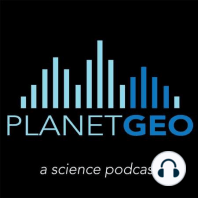9 min listen

A Geology Bullseye: The Black Hills of South Dakota
A Geology Bullseye: The Black Hills of South Dakota
ratings:
Length:
51 minutes
Released:
Mar 10, 2022
Format:
Podcast episode
Description
The Black Hills happens to be one of our favorite places. We thought it was the right time to talk about them as people are getting the itch for summer to arrive so we can play in the mountains. The Black Hills is the perfect area to orient a young family to a life of adventure and respect for the outdoors. You can't get into too much trouble here and these mountains and the surrounding area offers so much to do. The Black Hills of South Dakota are a destination - not a speed bump on your way out West. Sit back and enjoy!Geology of the HillsThe geology is complex but there are 3 basic suites of rock formations. The igneous and metamorphic core in the southern part of the Hills (Black Elk Peak, Mount Rushmore), some intrusive and extrusive igneous activity in the northern part of the hills (Bear butte and Devils Tower), and the sedimentary rocks that rim and surround the entire area (Racetrack and Wind Cave). From a 30,000 foot perspective, everythings looks like a huge oval shaped bullseye.The granite core, that has tons of awesome pegmatite was formed between 2 by and 1.8 by ago in the Trans-Hudson Orogeny. This is ancient mountain building event that formed the Canadian shield and the North American Craton (Jesse, you probably know a lot about this). The pegmatite makes for a climbing meca. Surrounding the Granite, is a diverse group of metamorphic rocks. These are the oldest in the area, because they were formerly sedimentary rocks that were metamorphosed into schists and gneisses by the THO. These rocks were intensely heated and squeezed enormously. In some areas of the hills, the metamorphic rocks are tilted 90 degrees (upended) and have been heavily eroded since. (Jesse, we love this stuff because we LOVE schist - garnet, staurolite, etc)The PreC core was eventually brought to the surface. How did this happen and How do we know?It was relatively flat, and then covered by a shallow sea and eventually the Western Interior Seaway.The sedimentary rocks that circle the BH are oldest near the core and get progressively younger further out. You can always tell where you are in the BH by the types of rocks around you - core vs. unaltered sed. rx.Over 7500 feet of vertically accumulated rocks hereThen the Laramide Orogeny began to influence this area. This is the famous event that formed the Rocky Mountains far to the West. But a stray blob of magma rose way to the East under the Black Hills - pushing up the PreC core and the sedimentary strata covering them. The highest parts of the BH are 7200 feet above sea level. The sed rx were 7500 feet thick so the total uplift is near 15,000 feet, but they were not likely ever that tall. As uplift was going on, so was erosion.The blob of magma was like a piston, shoving up the rocks from below. As the PreC core poked through, the sedimentary rocks were folded and upended. This also exposed them all as concentric rings around the core. Called a structural Dome.A series of igneous intrusions on the Northern end of the Hills (lacoliths, sills, and dikes) extend from Bear Butte 70 miles to the West and include the famous Devils tower and the Missouri buttes.Shale is a wimpy rock and therefore gets eroded into valleys. This is why the Racetrack goes all the way around the BH. So do all of the ridges. Looks like an oval bullseye.One other note about the the PreC igneous core is that they are exposed - the overburden is gone, which has caused unique jointing - formation of the Needles.——————————————————Instagram: @planetgeocastTwitter:
Released:
Mar 10, 2022
Format:
Podcast episode
Titles in the series (100)
Identifying Rocks Can Be Hard! (GeoShort) by PlanetGeo: The Geology Podcast